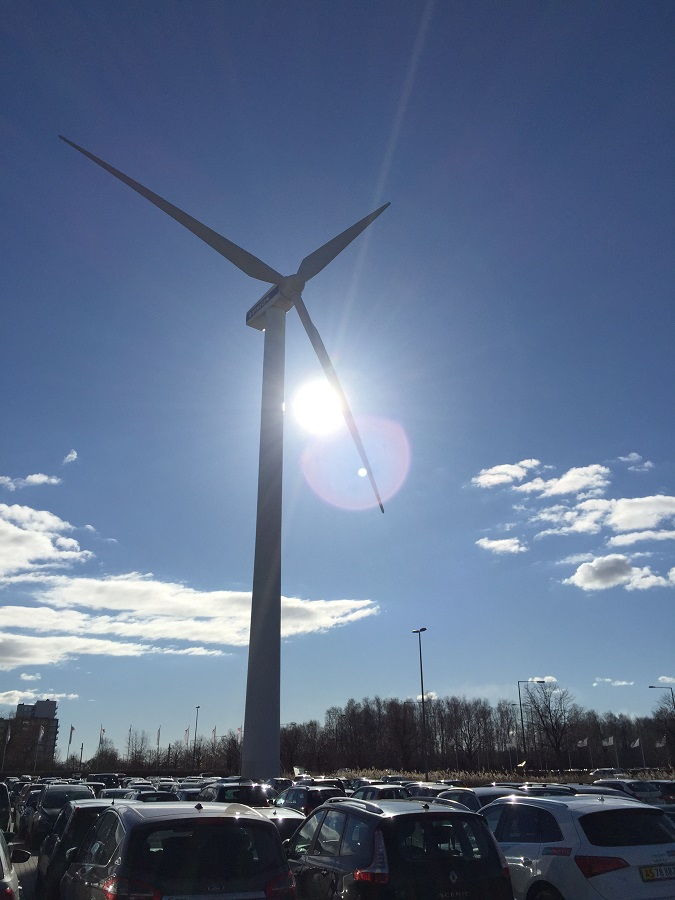Introduction
Wind turbine shadow flicker is the effect caused when a spinning turbine rotor causes brightness levels to vary within an affected room (although the precise definition can depend on who you ask[1-3]).
Figure 1: Wind turbine obstructing the Sun.
The rules on how much shadow flicker is allowed can vary from one county to another[1], with many countries allowing a defined amount of impact at residences within a calendar year. Shadow flicker remains a sensitive issue among residents near proposed wind turbines, often due to fears that effects will cause a disturbance or even a health hazard (although the latter has little evidence to support it[4]).
Irish Guidelines
The wind energy development guidelines in the Republic of Ireland are being reviewed[5]. Among the key aspects of the review that have been listed is “the elimination of shadow flicker through technology and appropriate modelling at design stage and provide that wind turbines will turn off automatically to eliminate any shadow flicker arising”.
Mitigating Wind Turbine Shadow Flicker
The most practical mitigation options, from a technical perspective, often include some or all of the below:
- Optimising the layout (to minimise or eliminate potential effects).
- Provision of screening (to reduce or eliminate noticeable effects).
- Shut-down scheme for turbines (to prevent effects at affected locations.
The wording used in the statement quoted above appears to refer to the third option, however in practice it may be acceptable to mitigate potential impacts in a variety of ways.
Accurate Modelling
Shadow flicker can be accurately predicted. Potential effects are dependent on the relative position, in three dimensions, of the Sun, the turbines and the observer. These parameters can be modelled with high accuracy, thereby pinning down where and when effects would be possible. This is something that should be progressed at the early stages of a wind development to stave off complicated, and potentially expensive, mitigation solutions at a later stage.
For any advice or queries regarding a specific project, please feel free to contact Pager Power (info@pagerpower.co.uk).
References
[1] Parsons Brickenhoff (2011), Update of UK Shadow Flicker Evidence Base
[2] DECC (2011), National Policy Statement for Renewable Energy Infrastructure (EN-3)
[3] Office of the Deputy Prime Minister (2013), Planning for Renewable Energy, a Companion Guide to PPS22 (withdrawn as of March 2014).
[4] Wind Energy Foundation (link), last accessed December 2017
[5] Announcement from the Minister for Housing, Planning, Community and Local Government (link), last accessed December 2017

